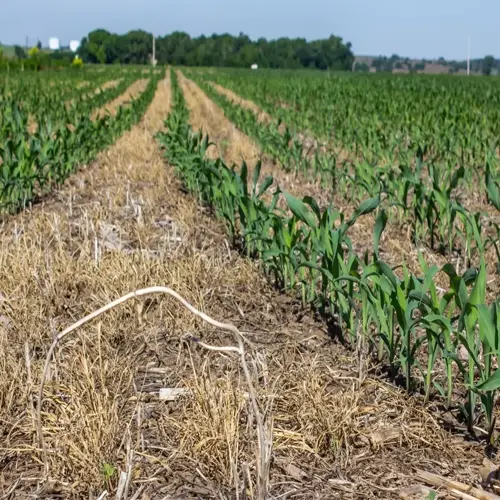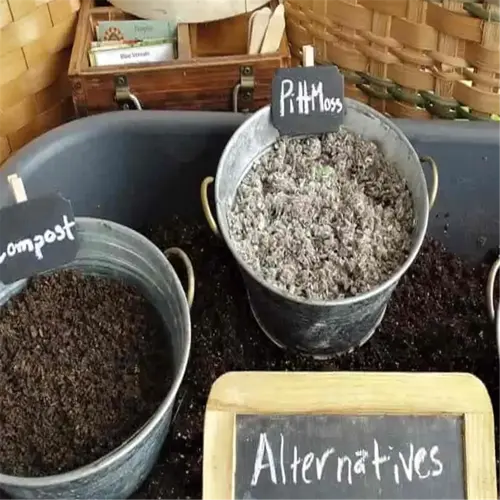7 Essential Tips to Plant Bulbs This Fall

Written by
Michael Sullivan
Reviewed by
Prof. Samuel Fitzgerald, Ph.D.Bulbs should be planted 6-8 weeks before your first frost
Allow 30% coarse sand into heavy clay so it drains better
Put mulch (4-6") down after the ground freezes to insulate for the winter
For warm climates (zones 8-11), pre-chill tulips/daffodils for 12+ weeks
Install hardware cloth (1/2") under bulbs if voles are a problem
Do not cut off the foliage until it completely yellows after blooming is done
Article Navigation
If you intend to plant bulbs fall timing is very important. The cool soil prompts biochemical changes which activates the bulbs for spring flowers. The bulbs prepare for spring like setting an alarm clock underground. If the timing is missed this will lead to poor growth or no flowers at all.
Despite common perception, bulbs do not require full sun. In Zone 6, I have successfully grown daffodils under maple trees. Drainage is the key concern. One of my clients lost tulips to saturated clay until we added gravel. Learn from the mistaken first try.
Your region will determine your level of urgency. Gardeners in Minnesota need to be planting by mid-October. Gardeners in Georgia have until November. Find your USDA zone. I keep a pinned chart of frost dates in my shed. You should too to allow for accurate planting.
Choosing the Right Bulbs
Staggering blooms require matching bulbs to your zone. For early spring color in zones 3-5, I use crocus and snowdrops. Mid-spring lovers in zones 6-8 can plant daffodils and hyacinths. Late bloomers like alliums extend bloom into June. I stagger the plant every two weeks for continuous color.
A customer had their tulips eaten by deer, so I moved to Fritillaria imperialis, a plant that emits skunky-smelling chemicals to deter browsers. Camassia leichtlinii does very well in wet areas where rodents are typically avoided. Both of these bloom in mid-spring. For zones 8-10, Lycoris radiata is an outstanding alternative for tulips, as it is drought tolerant and has blooms reminiscent of fireworks.
You can get your color from these reliable spire performers: early (Winter Aconite, Glory-of-the-Snow), mid (Spanish Bluebell, Checkered Lily), late (Persian Fritillary, Starflowers). Don't forget about *zone defiers* like Rain Lilies in the south. My personal all-time favorite is the *Snake's Head Fritillary* as it does well in shade and reseeds like mad.
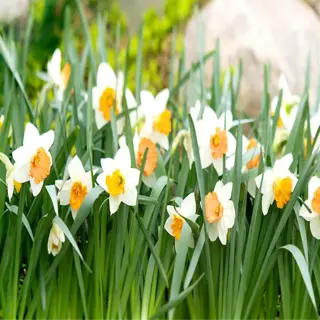
Daffodils (Narcissus)
- Naturalize easily in grassy areas for meadow-like displays
- Contain lycorine, a compound toxic to deer and squirrels
- Plant 'Tête-à-Tête' dwarf varieties in containers for patio blooms
- Best in zones 4-8 but adapts to 3-9 with mulch protection
- Bloom 6-10 weeks after planting depending on fall temperatures
- Pair with creeping phlox for color contrast
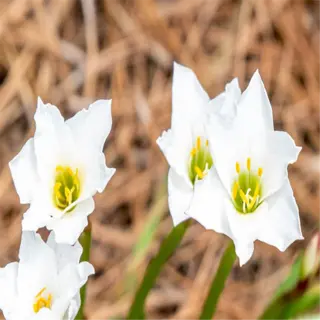
Rain Lilies (Zephyranthes)
- Fact: Flower within 3-5 days after summer/fall rains
- Fact: Thrive in zones 7-11 without winter chilling
- Tip: Plant in drifts of 25+ bulbs for dramatic effect
- Soil: Tolerate clay soils better than most bulbs
- Pest Control: Unappealing to rodents due to fibrous texture
- Design: Ideal for rock gardens or border edges
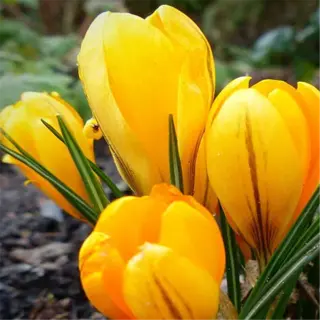
Crocus
- First sign of spring in snowy landscapes
- Plant 3 inches deep in well-drained soil
- Attracts early pollinators like bumblebees
- Naturalizes effectively in lawns and rock gardens
- Choose species crocus for perennial performance
- Vulnerable to squirrel digging; use gravel mulch

Allium
- Deterrent to voles and rabbits through scent
- Plant 6-8 inches deep in full sun
- Spectacular spherical blooms last 3-4 weeks
- Combine with low-growing sedum for contrast
- Leave seed heads for winter interest
- Requires excellent drainage to prevent rot
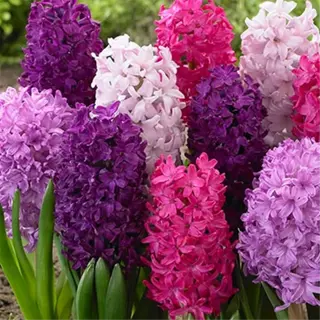
Hyacinth
- Fragrant spikes bloom 12-15 weeks after planting
- Pre-chill 12 weeks in warm climates (zones 8+)
- Wear gloves when handling due to oxalic acid
- Forces well indoors for winter blooms
- Naturalizes poorly; replant every 2-3 years
- Pair with pansies for spring containers

Tulips
- Require 12-14 weeks of cold stratification
- Plant 8 inches deep to deter squirrels
- Species tulips naturalize better than hybrids
- Combine with forget-me-nots for classic pairing
- Remove spent flowers but keep foliage intact
- Best in zones 3-7 without pre-chilling

Fritillaria
- Naturally repels rodents with skunk-like scent
- Requires excellent drainage and full sun
- Plant at 45-degree angle to prevent rot
- Majestic crown imperials grow 3-4 feet tall
- Combine with bleeding heart for shade gardens
- Zones 5-8 with winter mulch protection
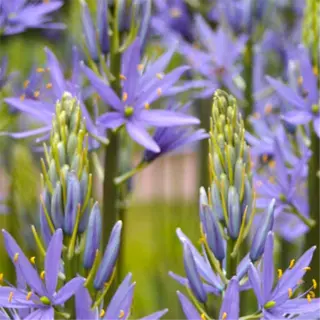
Camassia
- Native North American prairie plant
- Thrives in wet spring/dry summer conditions
- Plant 6 inches deep in clusters of 5-7
- Blue-violet spikes last 2-3 weeks in bloom
- Excellent for naturalizing in meadows
- Zones 4-8 with minimal maintenance

Scilla
- Naturalizes rapidly through self-seeding
- Bright blue flowers signal spring arrival
- Plant 4 inches deep under deciduous trees
- Combines well with hellebores and ferns
- Tolerates clay soils better than most bulbs
- Zones 2-8 with reliable perennial growth

Anemone
- Soak tubers overnight before planting
- Spread rapidly through rhizomatous growth
- Daisy-like flowers in white/pink/blue shades
- Excellent underplanting for roses and shrubs
- Prefers slightly acidic soil conditions
- Zones 5-9 with winter mulch in north
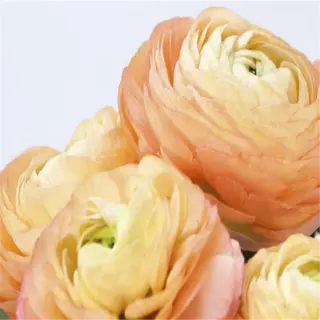
Ranunculus
- Require pre-sprouting in cool climates
- Plant claws with 'fingers' pointing downward
- Successive planting extends bloom period
- Combine with snapdragons for cutting gardens
- Lift in zones below 7 for winter storage
- Needs full sun and excellent drainage
Soil Prep & Planting Techniques
To avoid waterlogged clay soil, it will require 30% coarse sand and 20% compost. In sandy soils, adding 50% peat moss will better hold moisture. I learned this the hard way, losing 50 tulips to rot in unamended clay soil. Mix amendments into the top 12 inches of the soil to make a root-friendly garden bed.
The depth of the bulb is directly associated with the frost line in your USDA zone. For USDA zones 3-5, you should bury your bulbs 6-8 inches deep to avoid freezing. Gardeners in zones 7-9 can get away with a much shallower depth of 4-6 inches. A client, gardening in Vermont, operates on the "triple height" rule - that is, the depth should equal three times the height of the bulb.
In regions with an excessive amount of rain, such as the Pacific Northwest, you should consider a French drain or raised beds. In my home garden in Seattle, I line my planting trenches with gravel. To dig holes for my small bulbs (like crocus), I like to use a dibber, which is so effective in creating perfect holes. For mass planting, you should use a trenching spade or shovel. The trenching spade saved my wrists when I planted 500 bulbs.

Bulb Planter
- Creates uniform 6-8 inch holes for large bulbs
- Depth markers prevent over/under-planting
- Ergonomic handles reduce wrist strain
- Stainless steel models resist corrosion
- Alternative: Use post-hole digger for mass planting
- Clean with soapy water after use

Soil Thermometer
- Measures soil temp at 6-inch depth
- Ideal planting range: 55-65°F (13-18°C)
- Analog dials last longer than digital
- Take readings at 9 AM for accuracy
- Sanitize probe between uses
- Store in dry container off-season
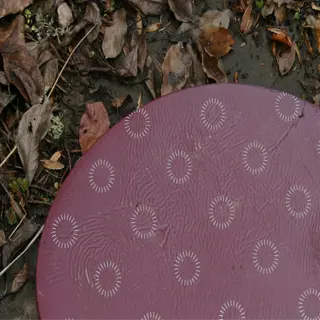
Kneeling Pad
- 1.5-inch thick foam protects knees
- Waterproof PVC coating for durability
- Handles allow easy transport
- Double as seat for elderly gardeners
- Wash with hose after muddy use
- UV-resistant materials prevent fading
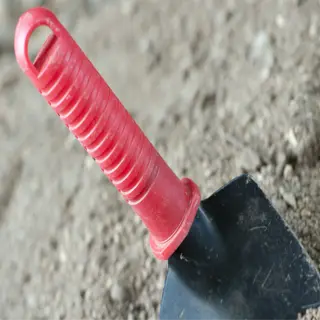
Trowel
- Stainless steel head resists rust
- Mark depth measurements on blade
- Rubber grip reduces blisters
- Sharp edge cuts through roots
- Hang on pegboard for storage
- Sharpen annually with metal file

Rooting Hormone
- Accelerates root development by 30%
- Dust bulbs before planting in poor soil
- IBA-based formulas most effective
- Wear gloves during application
- Store in airtight container
- Non-GMO options available

Soil Sieve
- Removes rocks/clumps from planting beds
- 1/4-inch mesh ideal for bulb soil
- Stainless steel frame resists bending
- Use before mixing amendments
- Lightweight aluminum models available
- Store hung vertically to save space
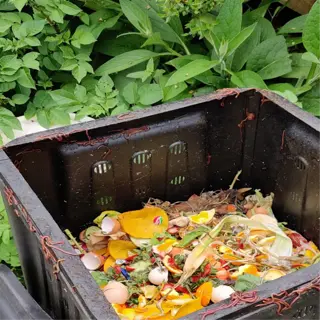
Compost Bin
- Turn kitchen scraps into bulb fertilizer
- Aerate weekly with pitchfork
- Maintain 3:1 brown-to-green ratio
- Use finished compost as top dressing
- Tumbler models accelerate decomposition
- Keep 10 feet from bulb beds to deter pests
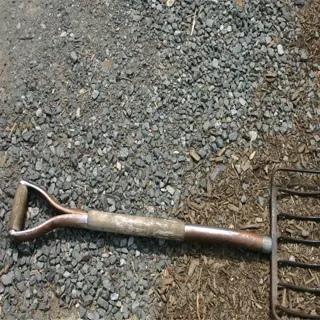
Garden Fork
- Loosens compacted soil without turning
- 4-tine designs prevent bulb damage
- Diamond-shaped tines resist bending
- 48-inch handle reduces back strain
- Clean after use to prevent rust
- Temper-coated steel lasts 10+ years

Bulb Basket
- Protects bulbs from voles and gophers
- 1/2-inch galvanized wire mesh
- Plant basket 8 inches deep
- Allows roots to grow through gaps
- Reusable for 5+ seasons
- Cut to size with tin snips

pH Test Kit
- Measures acidity/alkalinity in 5 minutes
- Test 6 inches deep for bulb zones
- Litmus paper changes color instantly
- Calibrate annually with control solution
- Includes 25 tests per kit
- Store in cool, dry location
Ideal Planting Times by Region
The USDA zone in which you reside specifies when you must hurry and plant bulbs. Gardeners in a zone of 3-5 should plant bulbs outside by the end of September. Those in a zone of 6-8 have until October mid-month to plant. Southern gardeners in a zone of 9-11 can wait until November to plant their bulbs. I use a soil thermometer to determine soil temperatures, aiming for 55-65F (13-18C). I recently had a client in Maine who missed this window and lost her entire crop of narcissus due to frost.
Urban heat islands complicate this. In downtown Chicago gardens typically plant two weeks later than in rural Illinois. I especially advise city gardeners to observe beds located next to the pavement. Pavement radiates heat. In contrast, valley floors in Vermont require that planting take place earlier. Slopes also warm differently, as a slope facing south will warm more than a slope facing north.
Frost shields for early planters are needed. Shredded-leaf mulch or burlap should be used when temperatures fall lower than 28°F (-2°C). I remember one evening last fall when a client from Colorado was using gallon jugs fashioned into cloches and saved his hyacinths as temperatures fell below 28°F. Do not use plastic sheeting because plastic sheeting traps moisture and rots stems during thaw cycles.
Frost Date Tracking
- Source: USDA Plant Hardiness Zone Map
- First fall frost dates range from Sept 10 (MN) to Dec 15 (FL)
- Bulbs need 4-6 weeks pre-frost for root establishment
- Use NOAA's Frost Probability Calculator for hyperlocal data
Soil Temperature Monitoring
- Ideal Range: 55-60°F (13-16°C) at 6-inch depth
- Delay planting if temps exceed 70°F (21°C)
- Take measurements at 9 AM for daily consistency
- Analog thermometers ±2°F accuracy vs. digital ±0.5°F
Microclimate Adjustments
- Urban areas: Plant 1-2 weeks later than rural zones
- South-facing slopes: Accelerate schedule by 10 days
- Low-lying areas: Add 14 days to avoid frost heave
- Container plantings: Extend window by 3 weeks
Weather Pattern Adaptation
- El Niño years: Warmer falls delay coastal planting
- La Niña: Colder temps accelerate northern schedules
- Drought conditions: Water bulbs postplanting for root growth
- Hurricane-prone regions: Stake tall bulb varieties
Succession Planting
- Early window (Sept): Tulips, Hyacinths
- Mid window (Oct): Daffodils, Alliums
- Late window (Nov): Crocus, Snowdrops
- Stagger plantings 2 weeks apart for extended blooms
Watering, Mulching & Winter Care
Clay soil retains water like a sponge. You can water every 10-14 days until the ground freezes solid. Sandy soils drain quickly. I lost a beautiful bed of ranunculus once while living in Arizona simply because I waited 7 days to water again. Now when I check for dryness, it's two inches down. Frequency depends on how well your dirt holds water.
Bedding depth depends on your zone's winter bite. Zones 3-5 need to use 6 inches of straw. Zones 6-8 are fine with 4 inches. In other locations where snow accumulation occurs, there is no need to use bedding until the first snowfall. One client in Minnesota has started using evergreen boughs. They exude good quality ice melt runoff, better than shredded bark.
Rodents burrow below mulch to have a buffet of plant bulbs for lunch. To prevent this, lay down hardware cloth below your beds. If you mix crushed gravel into your native soil, it deters diggers. Last winter a gardener in Maine was able to keep voles out of his garden by soaking cotton balls in peppermint oil. Reapply once a month. Do not use mothballs, as they are both ineffective and toxic.
Ice Melt Management
- Problem: Salt damage near walkways
- Solution: Use calcium chloride instead of rock salt
- Alternative: Plant salt-tolerant bulbs (Camassia)
- Application: Apply 2 weeks before first frost
- Timing: Treat during daytime thaw cycles
- Rinse Protocol: 5 gallons per sq ft after thaw
Rodent Prevention
- Deterrent: Mix crushed oyster shells into mulch
- Barrier: Install ¼" hardware cloth under mulch
- Trap: Set up bait stations 10ft from beds
- Frequency: Check traps every 72 hours
- Natural: Plant Fritillaria imperialis bulbs
- Repellent: Spray castor oil solution weekly
Snow Load Protection
- Structure: Build A-frame shelters over beds
- Material: Use UV-resistant PVC pipes & burlap
- Venting: Leave 1" gaps for air circulation
- Lifespan: Replace burlap every 2 seasons
- Removal: Brush off snow >6" depth
- Storage: Disassemble shelters by April 1
Thaw Cycle Damage
- Risk: Bulb heave in freeze-thaw cycles
- Prevention: Apply 6" mulch before first thaw
- Mulch Type: Shredded bark > straw for insulation
- Monitoring: Check for exposed bulbs weekly
- Signs: Look for cracked soil surfaces
- Repair: Replant within 48 hours if exposed
Winter Watering (Arid Zones)
- When: Temp >40°F (4°C) & no snow cover
- How: Deep soak 2" every 3-4 weeks
- Tool: Use heated hose for frozen spigots
- Measurement: Check soil moisture at 6" depth
- Exception: Skip if <20% soil dryness
- Caution: Avoid wetting foliage below 32°F (0°C)
Pest & Problem Solutions
Slugs are a nuisance in gardens along the coast yet avoid dry areas. In the yards of my clients in Portland, beer traps buried in the soil outperform any pesticide. So to control aphids, we rinse them off with a blast of water or spray with neem oil, but we do first advise fixing hydrophobic soil. One of my clients had established a rose garden that responded rapidly to our drainage remedy with a trench filled with gravel.
Overwatering induces bulb rot and fungus gnats. Use the finger test for soil moisture check. I rehabilitated a waterlogged allium bed by mixing in some perlite and lowering the irrigation schedule to weekly. *Have poorly drained soil?* Raise the beds to 6 inches. Rodents will steer clear of well-drained sites - consider utilizing crushed oyster shells under the mulch.
Companion planting reduces pests. For example, marigolds are repellent to nematodes in fields of dahlias. Garlic dispersed among tulip bulbs wards off voles in the tulip nursery. In my clients' fields, interplanted chives reduced thrips by 70%, according to my research last year. Catmint borders are helpful deterrents for Japanese beetles. Catmint works better than sticky traps and is less toxic than sprays.
Rodent Solutions
- Prevention: Install ½" hardware cloth 12" deep around beds
- Repellent: Soak cotton balls in peppermint oil weekly
- Trapping: Use snap traps baited with peanut butter
- Natural Predators: Encourage owls with nesting boxes
- Timing: Treat burrows in early spring before breeding
- Companion Plants: Daffodils (toxic alkaloids deter rodents)
Insect Control
- Target: Japanese Beetle grubs in lawns
- Treatment: Apply beneficial nematodes when soil >60°F (16°C)
- Spray: Garlic-chili pepper emulsion for aphids
- Timing: Treat at 7-10 day intervals during outbreaks
- Trap Crop: Plant radishes to lure flea beetles
- Beneficials: Release ladybugs at dusk for aphid control
Fungal Issues
- Prevention: Space bulbs 4-6" apart for airflow
- Treatment: Baking soda spray (1 tbsp/gallon water)
- Soil Fix: Add 2" sand topping for drainage
- Tool Care: Disinfect tools with 70% alcohol weekly
- Resistant Varieties: Choose Allium 'Globemaster'
- Rotation: Avoid replanting same species for 3 years
Deer Deterrence
- Repellent: Hang scented soap bars 4' high
- Spray: Egg-based commercial formulas monthly
- Fencing: Install 8' angled electric wires
- Landscaping: Create 'sacrifice zones' with deer favorites
- Timing: Reapply after heavy rain
- Bulb Choice: Plant deer-resistant Fritillaria
Bulb Fly Prevention
- Detection: Yellow sticky traps near soil
- Treatment: Drench soil with BT (Bacillus thuringiensis)
- Timing: Apply at first warm spring days
- Exclusion: Cover emerging shoots with row covers
- Sanitation: Remove infected bulbs immediately
- Trap: Apple cider vinegar + dish soap bowls
5 Common Myths
If you plant bulbs upside down, they won't grow.
Bulbs possess geotropic abilities to reorient themselves as they grow. Although bulbs planted the correct way establish more quickly, bulbs that are planted upside down will invariably self-correct, even if delayed 1-2 weeks in flowering time. Just be sure to plant the pointed-end up when you want maximal success.
All bulbs planted in fall require some winter chilling to bloom.
Only temperate bulbs like tulips (hardiness zones 3-7) need 12-15 weeks of temperatures below 40°F (4C). Tropical bulbs like rain lilies (hardiness zones 8-11) do not need chilling. Always confirm species-specific requirements before planting.
Bone meal is important for success in planting bulbs.
Modern research shows that phosphorus from bone meal usually bonds to alkaline soils before roots can access it. You instead can use a balanced 10-10-10 fertilizer by mixing 1 oz (28 g) per square foot in planting holes.
Bulbs cannot grow in soil that has a clay composition.
Clay soils can be good for holding nutrients if amended properly. You will want to mix in coarse sand (30%) and compost (20%) into clay to make air pockets. With the amended clay soil, Siberian squill and camassia will thrive no problem.
Pruning foliage right after flowering helps a bulb.
Pruning foliage too early deprives the bulb of photosynthetic energy for the following year's blooms. Allow the leaves to yellow completely before pruning, which takes about 6-8 weeks after flowering. If the aesthetics of the area are a concern you may braid or when there is sufficient foliage, fold the leaves cleanly out of sight.
Conclusion
Proper preparation and timing are incredibly important factors for being successful with bulbs. A client of mine in the state of Ohio planted tulips in warm soil too soon. By December, the tulips were completely rotted. She now waits until her soil temperatures are steady 55°F (13°C), along with compost-rich soil prep. If you follow my advice you will have a show of bulbs in April as your reward.
Begin with just a few types; maybe three types like daffodils, crocus, and alliums will be plenty! Make notes comparing their progress in a garden journal. I still feel bad that I experimented by planting 20 types the first time. I may have tried to care for 10 of those types of plants! Appropriate experimentation equals less than 9 types of bulbs. Focused experimentation provides more learning than chaotic ambition. Learn the basics before trying to expand.
Existing in your region on your browser, bookmark a frost date calculator. The USDA and your local extension services have free ones available. Looking for perennials that will provide sustainability? Consider natives, for example, camassia or bluebells. Native plants will acclimate to your local pests as well as rainfall. My favorite pairing is Camassia leichtlinii with Columbine. This duo attracts pollinators and is uneaten by deer.
The outcome of fall plantings is much more rewarding for those who want to plan. Dig your holes before the frost makes the soil too hard to break. Apply mulch after the first freeze. Share your excess with your neighbors. Next spring, you can look with pride upon the green spears that you planted. And then you will do it all over again. The garden is the philosophy of cycles rather than moments of brilliance.
External Sources
Frequently Asked Questions
What is the optimal fall planting window for bulbs?
Plant bulbs 6-8 weeks before your region's first expected frost. This allows roots to establish before winter. Check local frost dates and ensure soil temperatures are below 60°F (15°C) to prevent premature sprouting.
Can I salvage bulbs if I missed the fall planting deadline?
Store unplanted bulbs in a cool (40-50°F), dry place until early spring. Plant them as soon as the ground thaws. Forced refrigeration for 12 weeks mimics winter chilling in warm climates (zones 8-11).
Which bulbs reliably return annually when planted in fall?
Perennial bulbs like daffodils, alliums, and crocus naturalize over time. Tulips and hyacinths often require replanting. Focus on native species like camassia or bluebells for guaranteed yearly blooms with minimal care.
How do I protect bulbs from rodents after planting?
Use these rodent-deterrent strategies:
- Line planting holes with crushed gravel
- Install underground hardware cloth cages
- Apply repellent granules containing castor oil
- Plant rodent-resistant varieties like fritillaria
What's the correct depth for planting fall bulbs?
Aim for three times the bulb's height. For example, a 2-inch tulip bulb needs a 6-inch hole. Deeper planting in sandy soils prevents frost heave; shallow placement in clay improves drainage.
Can I use leftover bulbs from last season?
Inspect bulbs for firmness and mold. Soak shriveled ones in water for 4 hours before planting. Discard any with soft spots or fungal growth. Older bulbs may bloom later or produce smaller flowers.
How does mulch affect bulb growth in winter?
Apply 4-6 inches of straw or shredded bark after ground freezes. Mulch regulates soil temperature, prevents frost damage, and deters weeds. Avoid heavy materials like whole leaves that trap moisture and rot bulbs.
Do fall-planted bulbs need special fertilizer?
Use a balanced 10-10-10 formula at planting. Bone meal is optional but ineffective in alkaline soils. Top-dress with compost in spring when shoots emerge. Avoid high-nitrogen fertilizers that promote foliage over blooms.
What causes bulbs to rot after planting?
Common rot triggers include:
- Poor drainage in clay soils
- Overwatering before root development
- Planting damaged or diseased bulbs
- Using fresh manure as fertilizer
Can I grow bulbs in containers over winter?
Yes. Use well-draining soil and bury pots underground or insulate with burlap. Water sparingly until spring. Container depth must accommodate root growth, minimum 12 inches for daffodils. Move to shelter during extreme cold snaps.
